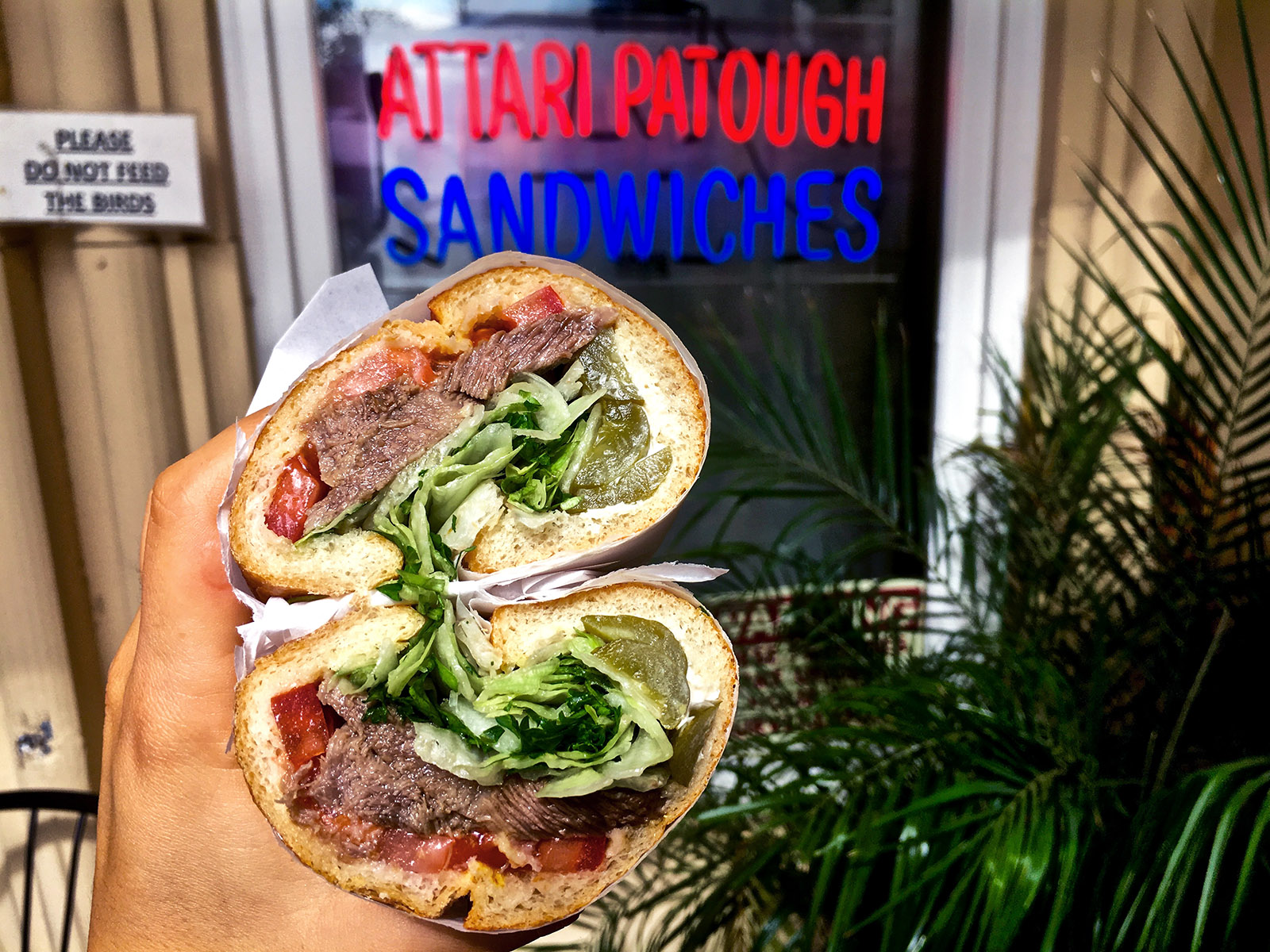The Quad: Offal, not awful – animal organs have health benefits

Attari Patough Sandwiches’ beef tongue sandwich is a prime example of delicious offal. (Giselle Abcarian/Daily Bruin)
By Giselle Abcarian
Oct. 30, 2016 5:56 p.m.
As I sank my teeth into the crunchy French baguette to reach the tender meat within, I tried hard to block out the distracting phone cameras flashing around me. I was at Attari Sandwich Shop, a Persian restaurant on Westwood Boulevard, its famous beef tongue sandwich in my hands, but it seemed that I was the only one of my friends who was actually enjoying it.
While I reveled in the meat’s juices running down my chin, my friends had yet to take a bite, still sending snaps and posting Instagrams of their “daring” choice in sandwich. From their squeamish behavior and cries of “You go first,” you would have thought a live animal quivered within the bread’s fluffy interior.
As I watched them hesitantly open the sandwich to examine the meat, I was suddenly hit by an image of my young host brother from my year abroad in France digging into a bowl of veal kidneys with a side of blood sausage, and I could not seem to reconcile it with the scene in front of me. Why are Americans so afraid of eating animal organs? And more importantly, what exactly are we missing out on from this disgust?
I’m sure the name offal – the term used to describe the edible entrails and internal organs of an animal – doesn’t help. Pronounced exactly like the world “awful,” the name already lends itself to a marketing disaster. And once you discover that the word emerged in the the 14th century to describe what “falls off” the carcass and can be used as a synonym for words like “trash” and “garbage,” I think it’s safe to say that it was doomed from the start.
Yet, many cultures around the world have celebrated the consumption of offal for centuries. In France, Italy, Germany, Argentina, China, Mexico and Russia, to name a few, traditional dishes feature ingredients such as cow stomach, sheep’s head, pig kidneys and lamb brain. And for good reason. As long as the animals are grass-fed and raised in a healthy environment, their organs are not only safe to eat, but also protein-packed, vitamin-rich and low in fat, making animal organs some of the most nutritious foods available.
Take liver, for example. While it gets a fatty rap from the popularity of foie gras, it is actually more of a “superfood” than your favorite blend of quinoa, acai berry and bee pollen granola. Beef liver is extremely high in protein, vitamin A, vitamin B-12, potassium, zinc and iron. It’s good for you and it tastes great as well. Thinly sliced liver with onions is a popular dish enjoyed in many places around the world such as Portugal, Italy and U.K.
Kidney is another great source of protein, vitamins and minerals. With about 100 calories, 20 grams of protein and only 3 to 5 grams of fat per 3.5 ounce serving, a dinner of kidneys is probably even healthier than your after-workout protein shake.
Not only can offal be nutritious and delicious but consuming it also could help the environment. Edible animal waste, meaning the organs that we refuse to eat, creates carbon dioxide and methane emissions, contributing to the ever growing global warming problem.
Eating more parts of each animal would provide more food for more people per animal as well. This could cut down on the amount of animals needed to raise for slaughter and the amount of environmental space required to support animal consumption. It’s an environmental and economic win-win situation.
If you’re thinking, yes, that’s all fine and dandy, but there must be some reason that Americans don’t eat offal, then let me clear it up for you. There is a reason. But it has nothing to do with the actual health benefits or taste of the food itself.
The lack of offal in Americans’ diet stems from colonial America times, when slave-owners took the easy-to-cook, large, choice pieces of meat and left the rest of the animal parts for the slaves. As a result, eating offal did not become socially acceptable in mainstream white American culture. Today, research has shown that there are still socioeconomic stigmas linked to the consumption of animal organs, which is viewed by some as a sign of poverty.
Due to limited experience with offal, Americans often experience a visceral disgust at the thought of eating it. In an interview with the Washington Post, Paul Rozin, a University of Pennsylvania psychology professor, described people’s horror at eating animal organs relating to their understanding of its nature and origin, not the actual taste. He went on to explain that once you give something a try and familiarize yourself with it, you can get over your initial feelings of fear and repulsion and learn to enjoy it. It’s all about how we perceive it in our brains.
So if you can look past the unfortunate name and open your mind to the world of animal organs, I’m sure you’ll find that offal is not so awful after all. Once my friends finally put down their phones and took a juicy bite of the delicate tongue meat in their sandwiches, they couldn’t help but devour the rest, and it wasn’t long before they were getting back in line for more.


